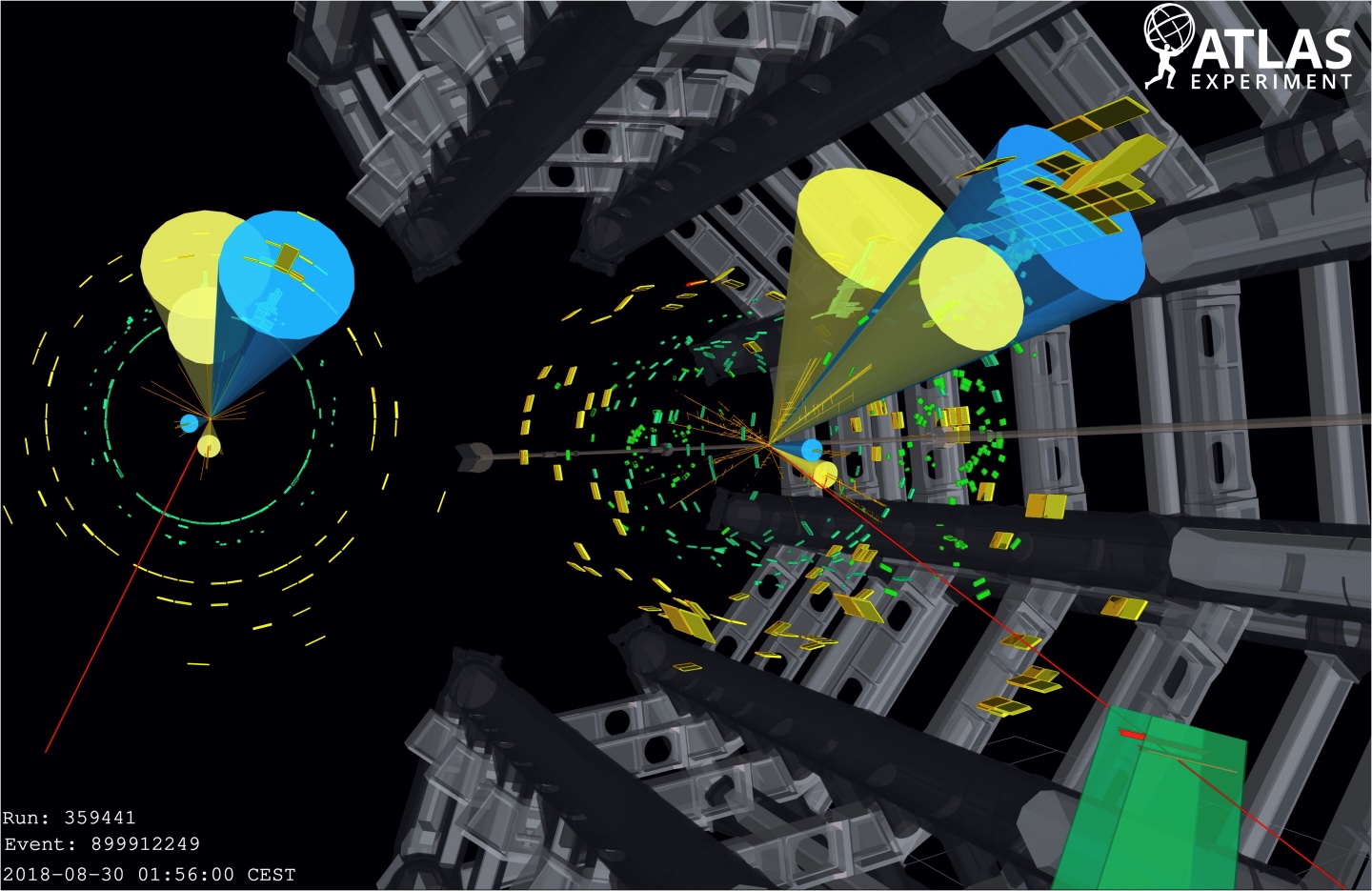University of Glasgow physicists working on the ATLAS experiment at CERN have led a precise new measurement of the mass of the top quark, using high-transverse-momentum (‘boosted’) top quarks.
The top quark is no ordinary particle. Weighing approximately 173 GeV – as much as a gold atom – it is the heaviest known fundamental particle.
A precise measurement of its mass is essential for testing the consistency of the Standard Model of particle physics and probing for new physics phenomena, which could appear as subtle deviations from predictions.
In a new study submitted to Physics Letters B, the ATLAS Collaboration analysed the full LHC Run 2 dataset (2015–2018) to study top-antitop-quark pairs produced in proton-proton collisions. However, there’s a challenge: the top quark decays almost instantly into a W boson and a bottom (b) quark, never reaching the detector. Physicists can only study it by piecing together its decay products.

Image credit: ATLAS Collaboration
While ATLAS is a large collaboration with more than 3000 scientists, individual physics results are performed by small teams. For this work, the team was led by Professor Mark Owen of the School of Physics & Astronomy.
Much of the day-to-day analysis work was carried out by PhD student Elliot Watton, supported by Glasgow research associate Jonathan Jamieson and former Glasgow research associate Federica Fabbri (now at the University and INFN Bologna).
Elliot, who will present the result at the prestigious Moriond workshop on Saturday 29th March, said: “The top quark is particularly exciting because of its close connection to the famous Higgs boson, which was discovered at the Large Hadron Collider in 2012. Over the past three and a half years, we have used a new combination of experimental techniques and ATLAS collision events to achieve a high precision result. I am incredibly proud to present our result at such a prestigious conference.”
For this search, the ATLAS collaboration focused on collision events where one high-momentum top quark decays hadronically, creating tightly collimated ‘jets’ of particles in the ATLAS detector. Together, these jets form a single ‘top jet’ with properties reflecting those of the originating top quark. This allowed the ATLAS team to establish a clear link between the top jet’s mass and that of the top quark.
This new result is the ATLAS Collaboration’s most precise top-quark mass measurement using a single decay channel: 172.95 ± 0.53 GeV.
Achieving a precise measurement first required addressing several key systematic uncertainties. For instance, physicists needed to carefully calibrate their measurements of the jet energies. This was achieved by reconstructing the W boson inside the top-jet and measuring its mass distribution. Since this distribution is sensitive to the jet energy scale – but not, crucially, to the top quark mass – researchers could use it to disentangle jet energy scale uncertainties from their mass measurement. This reduced jet energy scale uncertainties in the top-quark mass measurement by an impressive 80%.
Another major source of uncertainty arose from the theoretical modeling of how the b-quark radiates energy during the top quark decay. The ATLAS team tackled this by identifying a new observable that differentiates between various models and used it to determine which model best fits the data, ultimately reducing the uncertainty by 80%.
Professor Owen said: “The top quark is a fascinating particle, with a mass almost as heavy as a gold atom. Knowing the exact value of the top quark mass along with the Higgs boson and W boson masses lets us test if the Standard Model of particle physics is a consistent theory.
“In this analysis, we developed a new idea to help reduce the uncertainties in the measurement. It was really satisfying to see an idea that we originally sketched down on a bit of paper become reality and then work when applied in the real data.”
This new result is in excellent agreement with the LHC Run 1 combination, which remains the most precise top quark mass determination to date.
As LHC Run 3 continues and the High-Luminosity LHC upgrade appears on the horizon, the sheer volume of top quark events is set to skyrocket. This surge in data will lead to even more precise measurements, enabling increasingly stringent tests of the Standard Model.